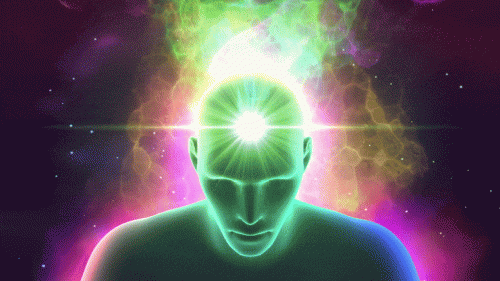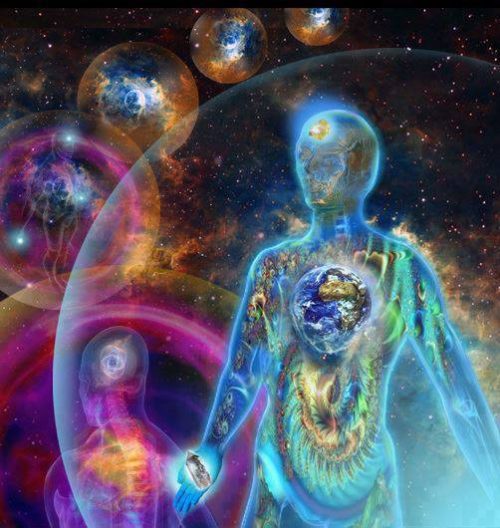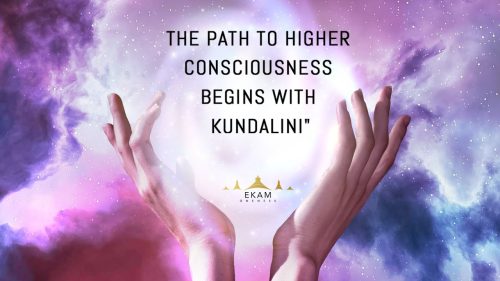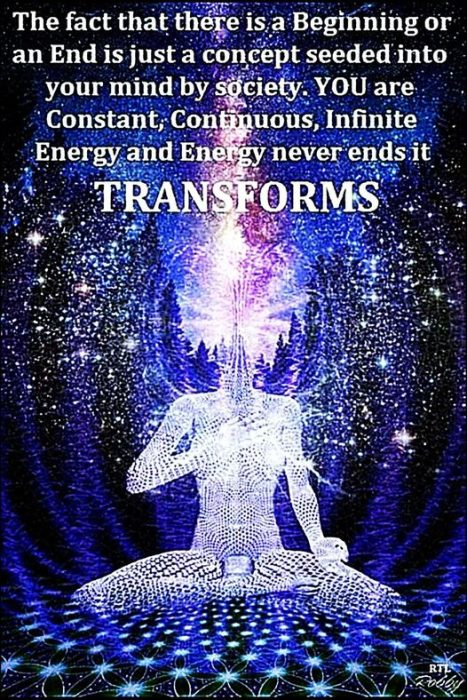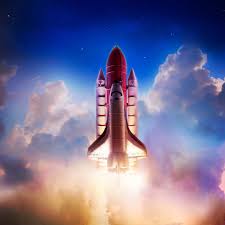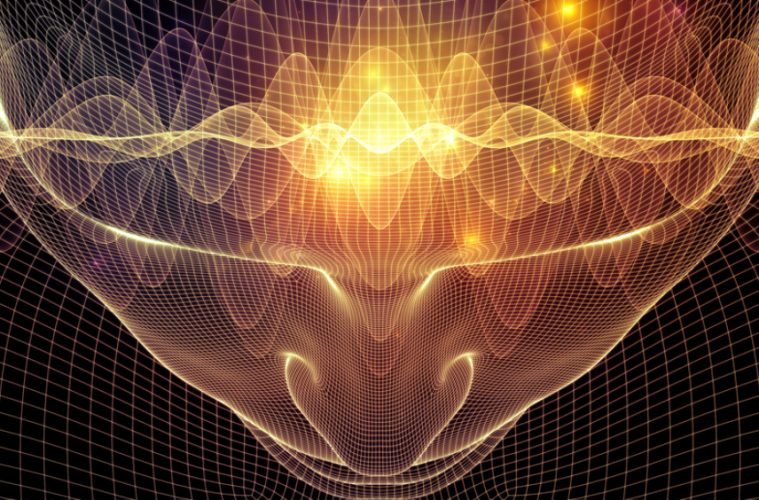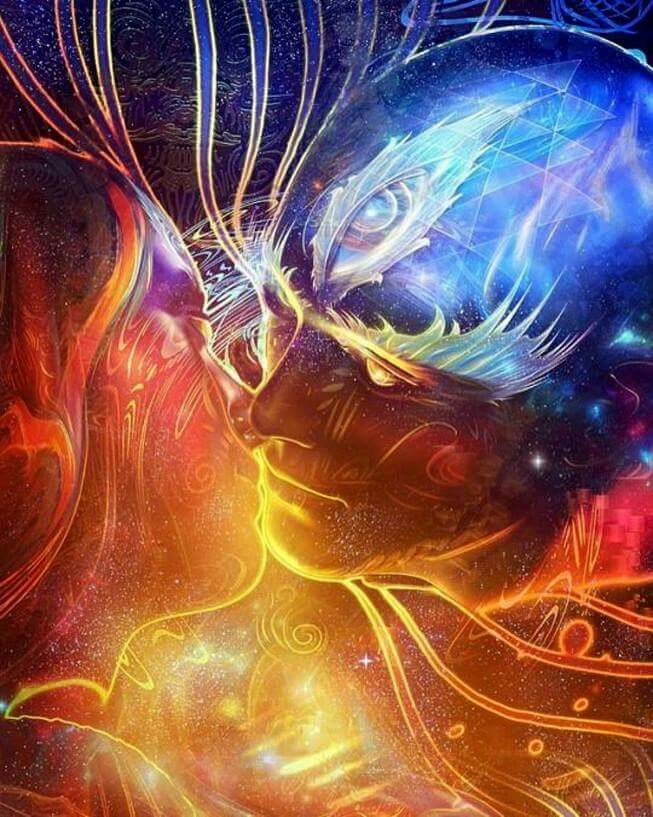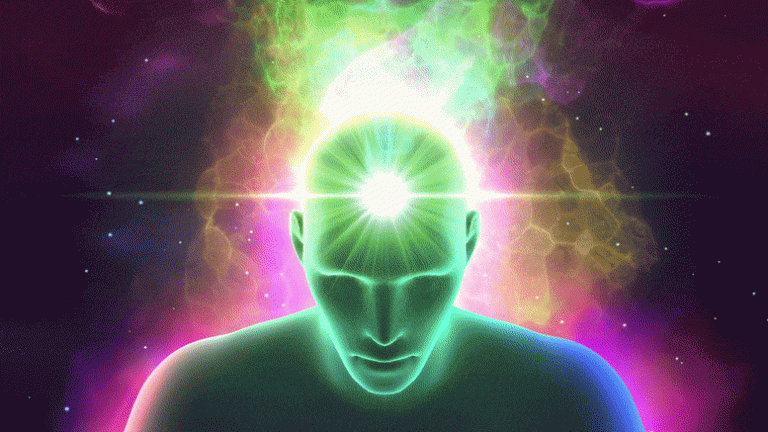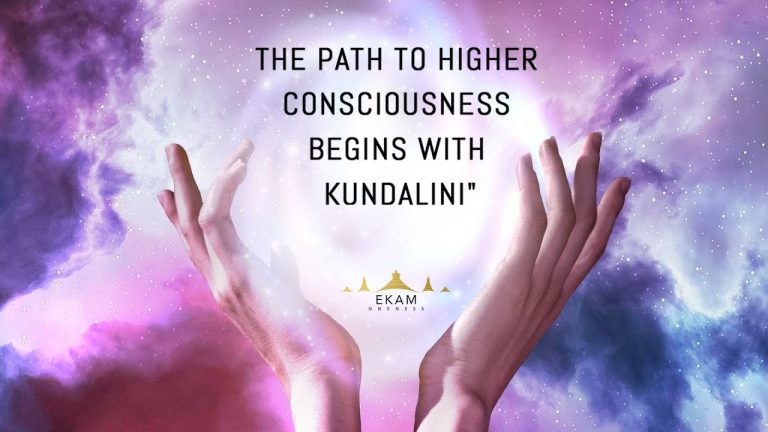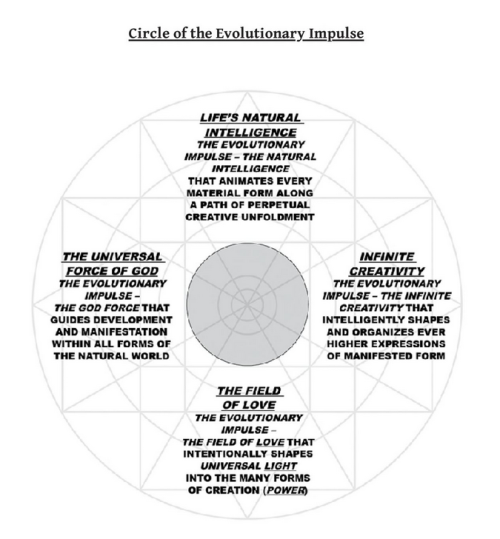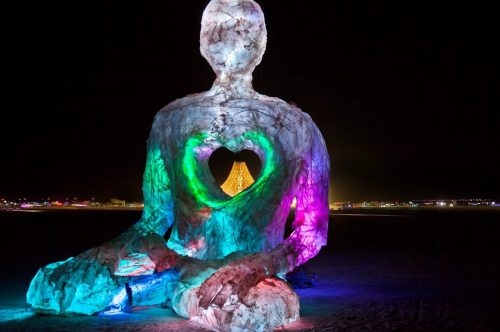
The Need for an Evolutionary Shift. Our challenge, it is said, is to fan that spark into a flame. When we awaken to the power within us, we come into alignment with the power of Creation and miracles happen (2 of 3)
How do we hear messages from the wisdom of the organism? We hear those messages through the language of sensation.
Yoga as being the possibility for harnessing our awareness to establish direct communication between the mind and the body. The human body is encoded with evolutionary intelligence.
In order to decode that knowledge into a usable source of guiding wisdom, we need to listen to the language of the body as it communicates to us through sensation.
The biological origins of the evolutionary impulse to move toward light, as encoded in the pineal gland, is one of the shaping influences that motivate our physical journey from infancy to maturity, from being belly-bound to standing. However, our development as multidimensional human beings is not limited to the physical; the pineal gland also stimulates development of mental and emotional intelligence that can eventually become so compelling that the language of the body is eclipsed and the wisdom of the body forgotten.
In acknowledging that both physical and mental dimensions of human development have a common origin in the pineal gland, we recognize the importance of attending to the communications that emerge when we become quiet enough to let the body speak and focused enough to listen and respond to its messages.
The Need for an Evolutionary Shift
Sexual consciousness is not the only component of bringing about a shift in human evolution, but it is one of the main keys to opening the door. Unless we bring consciousness to sexual life-force energy, the evolutionary impulse, the Force, the spark of life whatever we want to call it we may devolve instead of evolve. This is a strong claim to make, so let’s explain why we say this.
Not all men are born to be saints, but I believe we are all born with a voice within that we tend to ignore until it becomes so indistinct we barely know it’s there. The voice doesn’t come from an almighty God in the sky; it comes from an in-dwelling God in the soul. The poet-philosopher Henri Bergson, author of Creative Evolution, called it the elan vital, the vital impulse, the divine spark, the life force that drives us on.
In today’s world, creating ever-finer distinctions in every sector of life Is a natural part of the modern human experience. And further distinctions are also occurring in the area of spirituality, Especially in the sphere of humanity’s evolving relationship with God. In past times when people used the word “God”, it referred to one basic definition of the divine, Yet at this current period in human evolution, many of the world’s spiritual traditions Are now expressing at least three different and unique distinctions of God. For example, God can be experienced as “The Transcendent”, The non-personal eternal and unbounded Field of Limitless Consciousness, God can also be experienced as “The Beloved”, A Supreme Presence in which one can have a personal relationship with, And God can be experienced as “The Creation”, The vast Intelligence abiding within the elegant expressions Of the natural world and the Universe.
God as “The Creation” can be thought of as the Universal Field of Infinite Intelligence That creatively animates all phenomenal forms of life, The Divine Spark of Energy that’s embodied in all manifestations of Nature, The Evolutionary Impulse that directs the unfolding of the Cosmos.
Growth is an impulse of all living beings. It is the primary movement and expression of anything alive. In people and groups, we see this represented as the evolutionary impulse: a pattern of coherence that guides the universe and all beings towards enlightenment.
Wherever there’s a spark, whether creative or destructive, that is the evolutionary impulse trying to set the conditions for the next level of growth and healing trying to happen. Living systems follow this impulse by nature, and we believe that human beings can re-learn how to access this potential through intentional group work.
In almost every culture we meet myths about the origins of life, death, and the universe. Human consciousness of the spiritual or the sacred is found across cultures. Whether or not we explore the option of a “God impulse” hardwired into the brain, as Kevin Nelson has done, we are confronted with a human phenomenon: the belief in a spiritual dimension in the universe, a hidden life-giving impulse (Nelson, 2011).
For example, in the Judaic Hassid tradition, God fashions a very large clay vessel and then breathes the fire of love into it. God’s breath is so powerful that the clay vessel explodes into billions of particles, each of which contains an original God spark.
Our challenge, it is said, is to fan that spark into a flame (Cowley, 2011, 6).
The question I now ask, in the light of ecology and contemporary human consciousness, is whether that spiritual dimension is the very core of the evolutionary process, an integral impulse of nature, or whether it is a discrete Spirit — be it called the Holy Spirit, the Rainbow Spirit, or the Cosmic Spirit.
Is this primal spark ignited from within the cosmos, or is it the deliberate act of a separate igniting spirit outside the cosmos?
Denis Edwards also seeks to come to terms with spirit as the Holy Spirit and as the Life-Giver in the context of evolution and ecology.
He, however, argues that, the Spirit is not a power that can be discovered among the forces of the universe. The laws and forces of nature have their own integrity. The action of the Life-Giver is at another level… The Spirit of God is the Life-Giver, the power of becoming, who enables the unfolding of the universe and the evolution of life on Earth (Edwards, 1999, 90-91).
For Denis Edwards (and most in the Christian tradition) there is a separate life-giving power. In recent times, that life-giving impulse has been recognized as immanent in creation and, for scholars like Denis Edwards, deep in the evolutionary process. I wonder, however, whether in the evolution of our consciousness, we humans have focused with such in-tensity on the human life we have inherited that we have transformed its source into another being outside our world.
What if, then, I recognize that the Life-Giving Impulse in this universe is the spiritual core of the cosmos, part of our biological heritage, our cosmic identity, our human consciousness?
What if the spiritual is part and parcel of the geological, the biological, and the cosmological — that the life impulse is indeed the Life Impulse?
What if, instead of seeking the source of life out there or back then in some other being or force, we find Life here and now, deep within, pulsing throughout our planet?
To return to reflexive capacity, or metaphor-in-action, Hegel famously set out a method for knowing — an epistemology of dialectics — that focused not on how we gain knowledge of the world’s objects, but on the process of inquiry or knowing itself In other words, how does the mind work? Hegel saw an ever-present movement of inquiry between thesis (asking a question), antithesis (challenging the basis upon which the question is asked) and synthesis (shifting the question). This gives rise to what we once called ‘reflection’ in pedagogy (how and why did I do what I have just done?) and to critical reflexivity (what ideas or values drive and shape my assumptions and thinking process?). This is surely the pedagogy of thinking with and through metaphors.
As Jeffery Donaldson (2015) insists, metaphor is the evolutionary spark and process through which all biological transformation occurs, in life (bios) and mind (logos). Critical reflexivity, like Hegel’s ‘synthesis’, one might assume, produces a kind of ‘ambiguous clarity’. And critical reflexivity is, again, metaphor-in-action.
It is a sign where the universal evolutionary impulse gets its upward direction; materialism gets weakened and spiritualism begins to take a stronger hold on the person. It is a sign which signifies Nature’s bestowal of special power of growth and development.
It contains within itself all the powers of septenary principles, which enable life to grow in its multi-dimensional extension in a meaningful manner. It gives power to the seven force-centres, the Chakras of which the yogis speak and which when aroused yield enormous power over the finer forces in Nature. It is also the sign of great objectivity and detachment.
Taken together, one gets the perception of the unseen forces hovering around Jung’s destiny. His karma did not lie in the usual humdrum passage of worldly existence. He had to be concerned with giving direction to his own life and to the life of others.
The paradox of Teilhard’s thought is that trans-ego collective consciousness does not dissolve personhood but rather is the very basis of personhood. He writes: “The peak of ourselves, the acme of our originality, is not our individuality but our person; according to the evolutionary structure of the world, we can only find our person by uniting together.” He moves beyond the monastic (solitary) archetype to a new axial theology marked by collective consciousness. In the new age of evolution, self-introspection and/or the salvation of the individual are contrary to the evolutionary impulse toward greater unity and love. Thus, he calls us to a new level of consciousness, beyond our individual souls toward a new collective unity. “It is beyond our souls that we must look,” he writes, not the other way round.”‘
“Salvation” for them is awareness of the powerful effect of these celestial patterns and incorporation of them into one’s life. Many astrologers believe that “higher consciousness,” which is supposedly a joining of man with the divine evolutionary “impulse,” will eventually bring a mystical Oneness with ultimate reality.
The new evolutionary impulse requires our participation. We cannot sit back and wait for salvation from Heaven. We are required to consciously collaborate in our own awakening by choosing to take the inner steps to transformation.
An Agent of Change has the courage to choose a new way of being. It’s a radical shift in consciousness that comes from having the tenacity to walk through the internal landscape of darkness with an open heart. The new evolutionary impulse requires our participation. We cannot sit back and wait for salvation from Heaven.
We are required to consciously collaborate in our own awakening by choosing to take the inner steps to transformation. And we are required to consciously collaborate in the planetary awakening of our times through getting excited by the potential of radical change for humanity. One person at a time is how we change the world.
When each of us awakens to the miracle of our own power, we shift from being victims of our lives to being conscious co-creators. When we awaken to the power within us, we come into alignment with the power of Creation and miracles happen. But in order to awaken this power, we need to activate an inner muscle that, when used over and over again, creates ripples of remembrance in our body-mind-soul, and plugs us into the field of infinite possibilities. It is here, in the invisible realm of miraculous power, that we can choose how we want to experience our life and our world.
Guyau believes that the source of moral impulses is to be found in the evolution of life towards full development. As I have already mentioned, this is reminiscent of the evolutionary doctrine of Spencer, whom Guyau himself praised as the author of one of the most important works of his time. Spencer’s and Guyau’s ethical theories also have in common the fact that they both want to bring about a union between egoism and altruism. Since both of these characteristics are part of human nature, an empirical theory cannot pass either of them over without an evaluation. The point is, Guyau says,
`to unite, to a certain extent, egoism and altruism — a union which is the philosopher’s stone of morality …’ (SM, p. 209).
Love is the ultimate technique, the Philosopher’s Stone sought throughout the ages, the magical agent that turns the base into gold, disease into health, ignorance into knowledge, and poverty into abundance.
There were no special spells or mystical rituals used to perform his acts. They occurred spontaneously and usually unconsciously. They occurred in large part as an automatic by-product of his profound concern, affection, and compassion for others.
Do not be confused on this issue or you will never learn to do these things yourselves. Lazarus was raised from the dead because Jesus was so deeply concerned for him and for his family. Lepers, as well as the crippled and the blind, were healed because the surge of compassion that radiated naturally from Jesus when he saw them was so intense and so sincere and so unwavering. The water was turned to wine because he was so joyful at the prospect of the marriage and because he felt such a powerful impulse to express his generosity toward the couple.
Do not be confused on this issue or you will never learn to do these things yourselves. Lazarus was raised from the dead because Jesus was so deeply concerned for him and for his family. Lepers, as well as the crippled and the blind, were healed because the surge of compassion that radiated naturally from Jesus when he saw them was so intense and so sincere and so unwavering. The water was turned to wine because he was so joyful at the prospect of the marriage and because he felt such a powerful impulse to express his generosity toward the couple.
